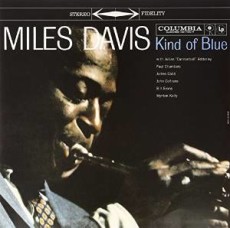
Daily Dose Of Jazz…
Miles Dewey Davis III was born May 26, 1926 in Alton, Illinois into an affluent family, father a dentist and his mother a blues pianist. They owned a substantial ranch in the Delta region of Pine Bluffs, Arkansas. When he was one years old the family moved to East St. Louis and it was between there and Pine Bluffs that his appreciation for music came out of the Black church.
His musical studies began at 13, when his father gave him a trumpet and arranged lessons with local musician Elwood Buchanan. He learned to play with out vibrato which gave him his clear signature tone. By age 16, Davis was a member of the music society and, when not at school, playing professionally first at the local Elks Club. At 17, he spent a year playing in Eddie Randle’s band, the Blue Devils and during this time, Sonny Stitt tried to persuade him to join the Tiny Bradshaw band, then passing through town. His mother insisted that he finish his final year of high school and he graduated from East St. Louis Lincoln High School in 1944.
In 1944, the Billy Eckstine band visited East St. Louis with Dizzy Gillespie and Charlie Parker in tow. Miles was brought in on third trumpet for a couple of weeks because the regular player, Buddy Anderson, was out sick. Even after this experience, once Eckstine’s band left town, Davis’ parents were still keen for him to continue formal academic studies.
However, In the fall of 1944, following graduation from high school, Davis moved to New York City to study at the Juilliard School of Music. His arrival marked a new chapter and he spent his first weeks attempting to contact Charlie Parker, against all advice even from Coleman Hawkins. Finally locating his idol, he became one of the cadre of musicians who held nightly jam sessions at Minton’s Playhouse and Monroe’s, both Harlem nightclubs. He was among future leaders of bebop Fats Navarro, Freddie Webster, J. J. Johnson as well as the established Thelonious Monk and Kenny Clarke.
Dropping out of Juilliard after asking permission from his father, Miles began playing professionally, performing in several 52nd Street bands led by Coleman Hawkins, and Eddie Lockjaw Davis. By 1945, he entered a recording studio for the first time, under the leadership of Herbie Field. This was the beginning of his many sideman recordings until 1946 when he recorded as a leader with the Miles Davis Sextet plus Earl Coleman and Ann Hathaway. Though a member of the groundbreaking Charlie Parker Quintet, he can be heard accompanying singers. He would play with Max Roach, Al Haig, Sir Charles Thompson, Duke Jordan, Curley Russell, Tommy Potter and Leonard Gaskin. This gave him numerous recording sessions and the beginning of what would become his cool jazz style.
After Parker’s breakdown and committal to Camarillo State Mental Hospital while on tour in Los Angeles, Davis, found himself stranded. He roomed and collaborated for some time with Charles Mingus, got a job with Billy Eckstine and eventually got back to New York. He would freelance and sideman in some of the most important combos on the New York jazz scene.
By 1948 Davis grew close to Canadian composer and arranger Gil Evans and his basement apartment had become the meeting place for several young musicians and composers such as Davis, Roach, John Lewis and Gerry Mulligan who were unhappy with the bebop scene. Together they created the tuba band sound that included French horn and tuba in the nonet line-up. The objective was to achieve a sound similar to the human voice, through carefully arranged compositions and by emphasizing a relaxed, melodic approach to the improvisations.
A contract and recording sessions between 1949-1950 with Capitol Records brought about the release of Birth Of The Cool in 1956, which gave its name to the cool jazz movement. Though met with resistance, years later it was co-opted by white musicians like Mulligan and Dave Brubeck and the critics who hailed it as a success.]
By the first half of the 1950s Davis was on tour in Paris with Tadd Dameron, Kenny Clarke and James Moody, and living the life of a black musician abroad. He was involved with French actress and singer Juliette Greco for a time and then returned to the States to be underappreciated by the critics and a liaison with the mother of his two children unraveled. This is when his heroin addiction began, with subsequent arrests. But iwas during this period that he became acquainted with Ahmad Jamal’s music and his elegant approach and use of space influenced him deeply and he definitely severed all ties to bebop.
Through the decade he would record for Prestige, work with Art Blakey, Sonny Rollins and John Coltrane, began using the Harmon mute creating a signature sound and phrasing. The most important Prestige recordings of this period were Dig, Blue Haze, Bag’s Groove, Miles Davis and the Modern Jazz Giants and Walkin’. This placed him in the center of the hard bop movement. It also hailed his period of withdrawal, being distant, cold, contempt for critics, and his quick temper.
His first great quintet included John Coltrane, Red Garland, Paul Chambers and Philly Joe Jones. This group brought forth such titles as Relaxin’, Steamin’, Workin’ and Cookin’ all with The Miles Davis Quintet. From 1957 to 1963 Davis recorded a series of albums with Gil Evans playing often trumpet and flugelhorn on Miles Ahead, Porgy and Bess, Sketches of Spain, and Quiet Nights. In 1959 with Bill Evans, Wynton Kelly, John Coltrane, Cannonball Adderley, Paul Chambers and Jimmy Cobb he recorded his magnus opus Kind Of Blue.
Through the Sixties he recoded with a number of musicians, Hank Mobley, Sonny Stitt, Jimmy Heath, George Coleman, Ron Carter, Tony Williams, Herbie Hancock and Sam Rivers. But it was Hancock, Williams, Carter and Wayne Shorter that became the nucleus of his second great quintets.
He would work with Chick Corea and Dave Holland, enter into his electric period playing with Joe Zawinul, John McLaughlin, Jack DeJohnette, Airto Moriera, Bennie Maupin and recorded the landmark Bitches Brew. He would create the Cellar Door Band before retiring in 1975. By 1979, he overcame his cocaine addiction and regained his enthusiasm for music and put together new smaller combos playing up until his death.
Miles Davis is regarded as one of the most innovative, influential and respected figures in the history of music. He has received numerous Grammy Awards, and according to the RIAA, the album is the best-selling jazz album of all time, having been certified as quadruple platinum (4 million copies sold. In 2009, the US House of Representatives voted 409–0 to pass a resolution honoring the album as a national treasure. On September 28, 1991 he passed away in Santa Monica, California.
More Posts: flugelhorn,trumpet
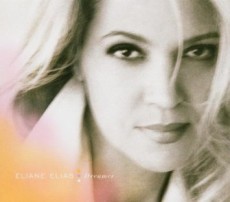
Daily Dose Of Jazz…
Eliane Elias was born on March 19, 1960 in Sao Paulo, Brazil and her musical talents began to show at an early age. She started studying piano at age seven, and by age twelve was transcribing solos from the great jazz masters. Fifteen, saw her teaching piano and improvisation and her performing career began at age seventeen, working with Brazilian singer/songwriter Toquinho and the poet Vinicius de Moraes.
In 1981, she headed for New York and a year later landed a spot in the acclaimed group Steps Ahead. In 1988 she was voted Best New Talent in the Critics Poll of Jazziz magazine, together with Herbie Hancock she was nominated for a Grammy in the “Best Jazz Solo Performance” category for her 1995 release, Solos and Duets, received the Downbeat Readers Poll’s “Best Jazz Album” for her recording The Three Americas and has been named in five other categories: Beyond Musician, Best Composer, Jazz Pianist, Female Vocalist, and Musician of the Year.
Elias has recorded with RCA Victor, Bluebird, Denon, Manhattan, Blue Note, EMI, Concord/Picante, ECM and Savoy Jazz spanning over twenty albums to date. She has recorded two albums solely dedicated to the works of the composer, Plays Jobim and Sings Jobim. Her 1998 release, Eliane Elias Sings Jobim, winning Best Vocal Album in Japan and was awarded Best Brazilian Album in the Jazziz Critics Poll. She has been featured in a Calle 54 documentary, received several Grammy nominations for Best Latin Jazz Album, and recorded with Denyce Graves on The Lost Days.
On her first album titled “Amanda” released in 1984 she collaborated with Randy Brecker and shortly thereafter she began her solo career. She has also collaborated with bassist Marc Johnson on the album Swept Away. Pianist, singer, arranger and songwriter Eliane Elias, known for her distinctive blend of her Brazilian roots with voice, jazz and classical music, continues to compose, record, perform and tour.
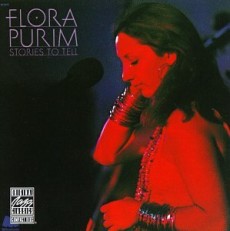
Daily Dose Of Jazz…
Flora Purim was born on March 6, 1942 in Rio de Janeiro to Jewish parents who were both classical musicians, her father a violinist and her mother a pianist. She discovered jazz when her mother played 78 vinyl rpms of Dinah Washington, Billie Holiday, Frank Sinatra, Bill Evans, Oscar Peterson, and Erroll Garner while her husband was out of the house.
Purim began her career in Brazil during the early 1960s. During this period, she made a recording of bossa nova standards by Carlos Lyra and Roberto Menescal titled Flora e M.P.M. Later in the decade she became lead singer for the Quarteto Novo, led by Hermeto Pascoal and Airto Moreira.
Flora mixed jazz with radical protest songs to defy the repressive Brazilian government of that time and a 1964 military coup led to censorship of song lyrics. Shortly before leaving Brazil she married Airto and arriving in New York in 1967, they became immersed in the emerging Electric Jazz. They toured Europe with Stanley Clarke, Stan Getz and Gil Evans. In 1972, alongside Clarke and Joe Farrell, they were, for the first two albums, members of Return To Forever. That year the band released their debut self-titled album Return To Forever, followed the same year as Light as a Feather.
In 1973, Purim released her first solo album in the United States, titled Butterfly Dreams. She was chosen by the Down Beat reader’s poll as one of the top five jazz singers. She worked with Carlos Santana and Mickey Hart and throughout the 1970s, Flora released a string of albums for the Milestone label, became involved with the Uruguayan band Opa, (which means “hi” in Uruguay), Purim collaborated in vocals in the band’s second album Magic Time, and in return, Opa played in “Corre Niña” on Flora’s album Nothing Will Be as It Was…Tomorrow .
In the 1980s Purim toured with Dizzy Gillespie’s United Nation Orchestra, culminating with Gillespie’s Grammy Award-winning album Dizzy Gillespie and the United Nation Orchestra – Live at the Royal Festival Hall, London. The Nineties saw her singing on the Grammy Award-winning album Planet Drum by Mickey Hart, the release of her own album and world tour, Speed of Light and a new band with contributions from Billy Cobham, George Duke, Alphonso Johnson, Giovanni Hidalgo and others.
Through the 1990s, Purim worked on a number of Latin projects, collaborated with P.M. Dawn on the album Red Hot + Rio. She has a huge catalogue of music that showcases her rare six-octave voice renders a vocal style influenced by Sarah Vaughan and Ella Fitzgerald, drifting from lyrics to wordlessness without ever losing touch with the melody and rhythm. She broadened her repertoire to include traditional mainstream jazz, bebop and doing numbers in 4/4 time instead of the traditional Brazilian 2/4 beat. She is a 4-time winner Down Beat’s Best Female Jazz Vocalist and 2-time Grammy nominee for Best Female Jazz Performance and has been named “Order of Rio Branco” by Brazil President Fernando Henrique Cardoso. She continues to perform, record and tour.
More Posts: vocal
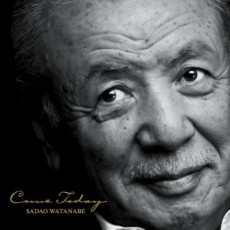
Daily Dose Of Jazz…
Sadao Watanabe was born on February 1, 1933 in Utsunomiya, Japan and first began learning music at the age of 18. He started performing professionally in 1953. By 1958 he had established himself as a world-class saxophonist having performed with leading musicians and quartets. In 1962 he left Japan to study at Berklee College of Music in Boston.
Known for his bossa nova recordings, Sadao’s work encompasses a large range of styles with collaborations from musicians all over the world. Of his 72 albums to date, he has had 13 albums reach the top 50 Billboard charts and two within the Top 10. He has also had numerous albums reach number one on the jazz charts.
Watanabe has been awarded the Order of the Rising Sun – the imperial medal of honor, the Fumio Nanri Award, and an honorary Doctorate Degree from Berklee College of Music.
In addition to his musical career, alto and soprano saxophonist and flutist Sadao Watanabe is also a published photographer with six books to his credit in Japan. He is also a U.S. citizen sharing his time between his homeland and Los Angeles, California as he continues to perform, record and tour.
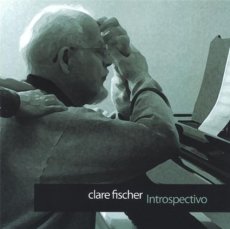
Daily Dose OF Jazz…
Clare Fischer was born October 22, 1928 in Durand, Michigan and started general music study in grade school with violin and piano as his first instruments. By age 7 he was picking out four-part harmony on the piano and by 12 was composing classical music and creating instrumental arrangements for dance bands.
In high school he added cello, clarinet and saxophone to his arsenal of instruments and studied music theory, harmony and orchestration privately. He started his own band at 15, writing all the arrangements, went on to college studying music composition and theory as a piano major. After graduation and a stint in the Army as the arranger for the U.S. Military Academy Band at West Point, N.Y., he returned to Michigan State and received his Masters in 1955.
He went on to arrange for the vocal quartet Hi-Lo’s that would later become a major influence on Herbie Hancock, would record under his own name in 1962 for Pacific Jazz, play with Bud Shank, Joe Pass and Cal Tjader among others, arrange for Sergio Mendes and Willy Ruff, began playing organ and composed his most famous compositions, Pensativa and Morning.
By the mid-‘70s Fischer was pioneering the electric keyboard, reconnected with Tjader started his group Salsa Picante, won a Grammy for his album 2+2 and Free Fall, forayed into R&B doing orchestral sweeteners, worked with Rufus with Chaka Khan, The Jacksons, Earl Klugh, The Debarges, Shot-gun and Atlantic Starr and pop artists such as Paul McCartney, Prince, Celine Dion and Robert Palmer, picking up numerous gold records.
From the Eighties on Clare has been commissioned to score symphonic work using Duke Ellington and Billy Strayhorn themes, working with Branford Marsalis, the Netherlands Metropole Orchestra, arranged for Spike Lee’s Girl 6, has conducted clinics and master classes at numerous universities, and continued to record in small group and orchestral settings until his death in Los Angeles, California on January 26, 2012 at age 82..
More Posts: arranger,bandleader,composer,keyboard,piano,saxophone,synthesizer


